Postcard History continues our tradition of Fifth Sunday articles into this new year.
Today, you will have the opportunity to read a postcard story that is heart-felt and personal. Secondly, you will learn the history of a New England artifact with social and political connections, and then you will find an account of an agonizing event in American history illustrated with cards from the collection of Postcard History’s publisher.
Cumberland Fishing by Gail Wendt
My mother often spoke of the “vacations” she took as a child with her family to a cottage by a lake near Cumberland, Wisconsin. The word vacations is in quotation marks for a reason and could, according to my mother’s description, put the word cottage in quotes as well. Rustic might be a nice way to describe the cottage, according to my mother.
Those childhood trips were perhaps vacations for my grandfather, who got to do just what he wanted on these breaks from his business life: fish and play cards with friends and family. They were not a vacation for my grandmother. My grandmother and the other womenfolk spent their days cooking the meals, cleaning the fish, watching the children, and trying to keep the cottage clean and pest free. None of these were easy tasks.
The men had it easy. They would get together after supper and play cards all night long and then would head out fishing in the early morning hours. They’d come home after the fish stopped biting and go to sleep and then wake up in time for dinner. Then they’d get out the cards and repeat the cycle.
My mother had an envelope of photos from those trips, labeled simply “Cumberland Fishing.” Two of the photos show my mother and her sister, who was six years older, sitting on the railing of the stairway leading down from a cottage to the water. My mother had told me that the cottage was owned by a man named Miller, and that was how they always referred to it, as the “Miller Cottage.”
Although not a true postcard collector, I always look through the boxes of postcards of Wisconsin. I was especially delighted to discover Real Photo postcards. At one show, I was thrilled to find a postcard labeled “E. L. Miller, Cottage No. 2, Cumberland, Wis.”
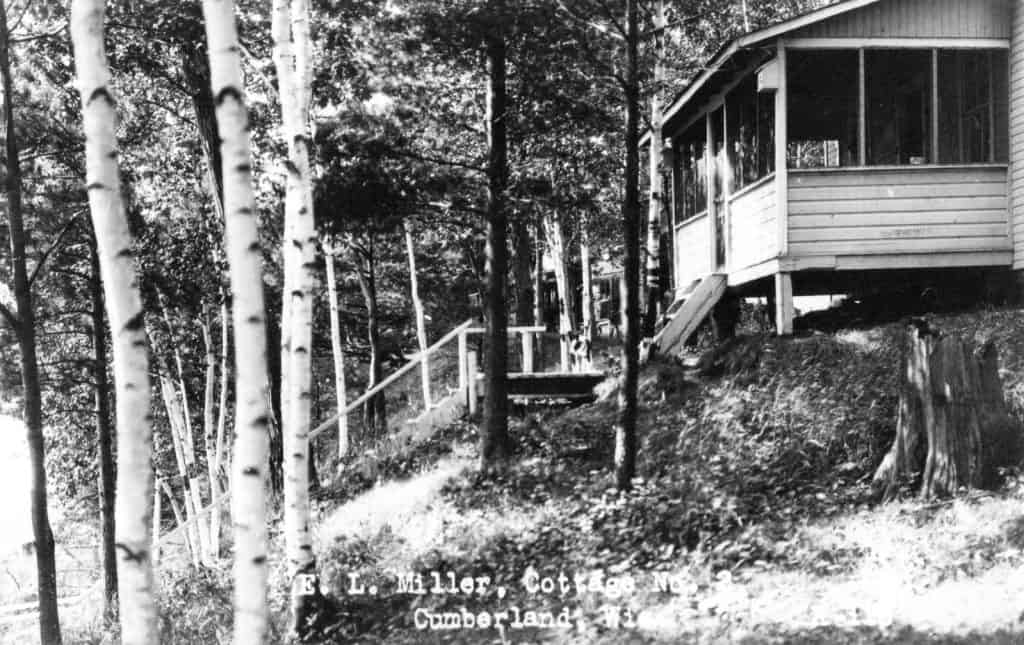
On the postcard you can clearly see a long stairway coming down from the cottage towards the lake. Granted, it looks a bit different from the stairway on which my mother and aunt are perched, but perhaps they were in Cottage No. 1 or No. 3—I have no idea how many cottages Miller owned. But the similarity of look and the identification of the owner were close enough for me to shout “Eureka” (quietly to myself, of course) and to purchase the postcard. It was very satisfying to put the postcard under the photos of the two girls—it finished the story.
I’m unsure how many trips were made to Cumberland, but from news items in the Marshfield, Wisconsin, newspapers, the family made the trip at least in 1921, ‘22, ‘23, ‘26, and 1927. The photos of the girls sitting on the stairs might be from the 1926 or 1927 trip, when my mother was six or seven years old.
I don’t know how they happened to find the Miller cottages. My grandmother’s brother lived in Cumberland for many years, and he married a local girl, so that may have been the connection to the area. I like to think that despite the less than elegant surroundings of the Miller Cottages there were some memorable moments for my mother, her sister, and for both my grandparents. I think she treasured those photos that she put in that envelope and then labeled “Cumberland Fishing.” When I found the Real Photo postcard, I wished I could have shared this treasure with her.
***
The Sacred Cod
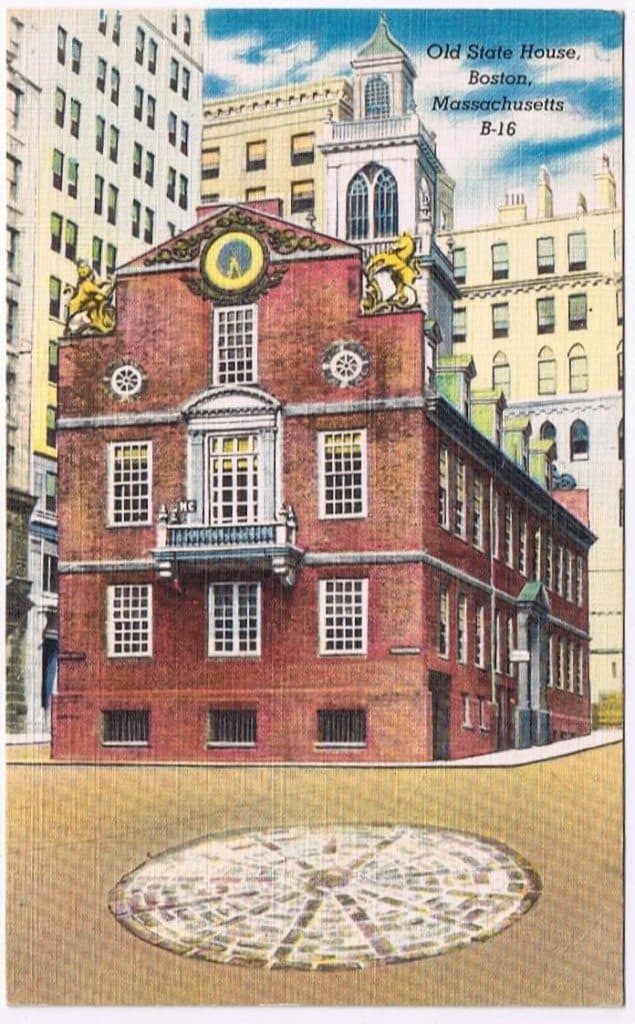
There is a relic known as the Sacred Cod of Massachusetts. It is a large wooden carving of a cod fish, a fish that is abundant in the waters off the coast of Massachusetts that has figured highly in the economic history of the state for generations. The Sacred Cod has a long and storied history that dates to colonial times.
The origins of this unique woodcarving can be traced to the 18th century when it was customary for each New England colony to send a symbol of their prosperity to the British Parliament as a token of their appreciation for being granted self-governing status. The cod was chosen as the symbol for Massachusetts due to the importance of the fishing industry in the region.
The carving was done by a skilled wood artist named Thomas Hastings. It was made expressly to be sent to England as a gift to the British Parliament. However, due to political tensions between the colonies and the British government, the cod was never presented to Parliament in an official ceremony. It was returned to Massachusetts and quite ceremoniously hung in the Old State House in Boston, where it has remained ever since.
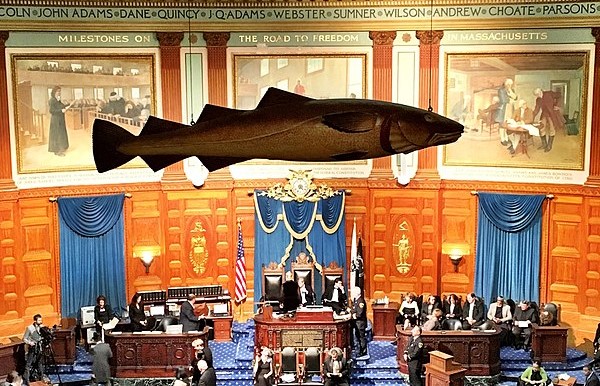
Over the years, the relic has come to symbolize more than just the fishing industry. It represents the spirit of independence and resilience that is characteristic of the people of Massachusetts. During times of political turmoil and change, the Sacred Cod has served as a reminder of the state’s history and values.
The Sacred Cod has also become a popular tourist attraction, drawing visitors from around the world to see this unique symbol of Massachusetts. It is considered a symbol of good luck and many people believe that touching it will bring them good fortune.
In addition to its cultural significance, the carving has also played a role in the political history of Massachusetts. It has been the subject of controversy and debate, most notably during the American Revolution. When British troops occupied Boston in 1775, they attempted to steal the Sacred Cod as a symbol of their dominance over the colony. However, the cod was saved by patriot John Adams, who secretly moved it to a safe location.
In more recent times, the Sacred Cod has been a focal point in discussions regarding conservation efforts and the protection of the fishing industry in the state. The declining fish populations in New England waters has led to debates about fishing regulations and environmental policies.
Overall, the Sacred Cod holds a special place in the hearts of the people of Massachusetts. It is a symbol of their history, culture, and values, and continues to be an important part of the state’s identity.
***
The Trail of Tears
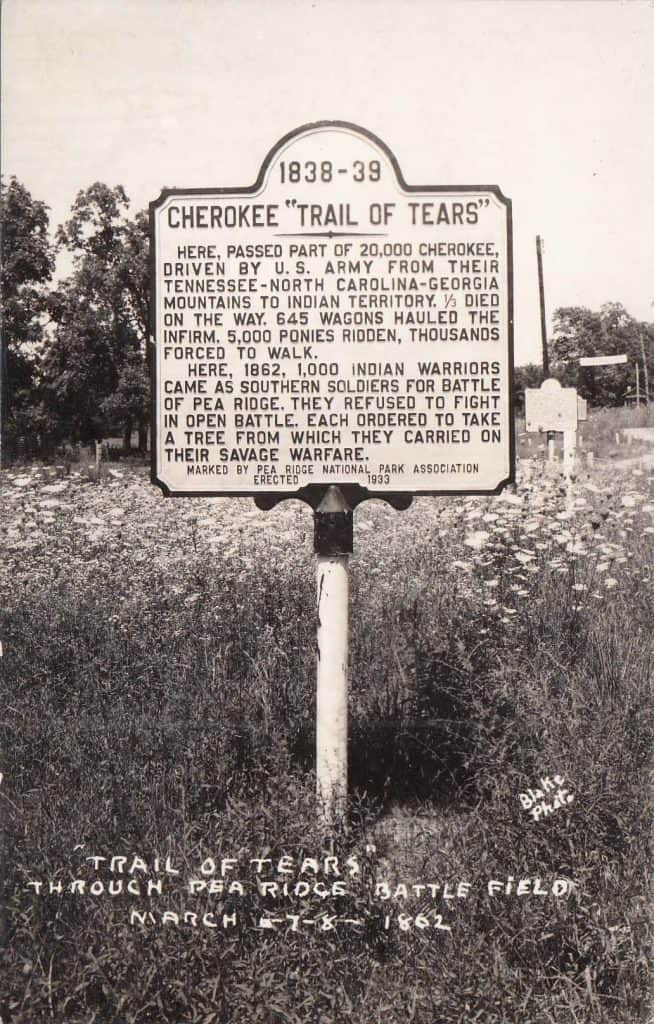
The Cherokee Trail of Tears was a shameful and tragic event in American history. The event highlighted the destructive impact of colonization on Native American communities across many states.
Beginning in the late 1830s, thousands of Native Americans were forcibly removed from their ancestral lands and made to march hundreds of miles to a designated Indian Territory in what is now Oklahoma. The journey took months and was filled with hardships and losses, earning it the name “Trail of Tears.”
The forced relocation of Native Americans was largely a result of the Indian Removal Act of 1830, signed into law by President Andrew Jackson. This act authorized the federal government to negotiate treaties with Native American tribes for their removal to lands west of the Mississippi River. Despite promises of compensation and provisions for the journey, the reality was far from humane.
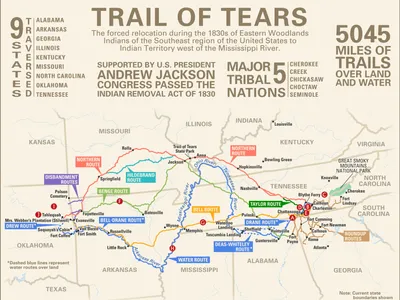
The Cherokee in particular, endured immense suffering during their forced relocation. In the winter of 1838, approximately 16,000 Cherokee people were forced to walk more than 1,000 miles to the newly designated Indian Territory. Harsh weather conditions, lack of food and water, and outbreaks of disease resulted in the deaths of thousands, many of which occurred during the journey.
The event serves as a grim reminder of the devastating impact of colonization and has often been memorialized in art by American artists like Robert Lindneux, who was considered America’s “Artistic Historian of the West.” Lindneux’s reputation is based on the nearly obsessive passion for artistic exactness; he frequently spent months doing extensive research into the events and subjects that he painted.
It was Robert Lindneux who first recognized the impact of the forced removal of Native Americans from their lands that not only resulted in loss of life but also had long-term effects on their cultural identity as a tribe. And it was not only the Cherokee; other tribes lost valuable traditions, customs, and in some places their languages.
In recent years, efforts have been made to acknowledge the suffering of Native Americans during the Trail of Tears and to honor the memory of those who lost their lives. Memorials, museums, and educational programs have been established to raise awareness about this chapter in American history, but they are just candles, not spotlights.



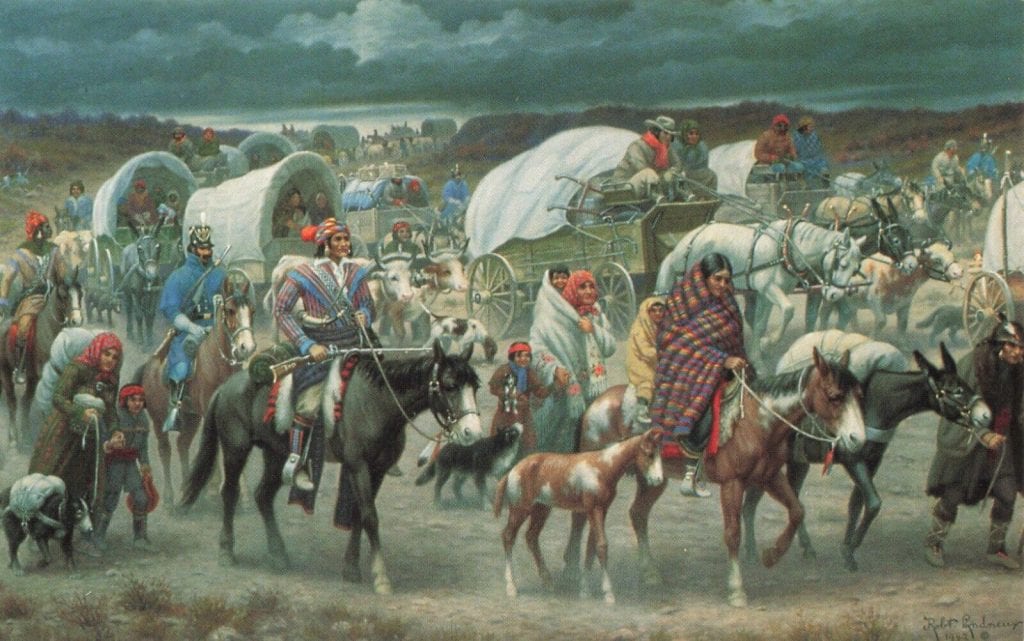
Thanks for sharing three very interesting bits of history, even though the last mentioned is sad.
Each postcard related story taught more history in a few words that could ever be imagined. This feature is great!
I second Bill Taylor & Shav La Vigne comments.
Analogous to the Trail of Tears, the Potawatomi Trail of Death ran from near where I live in Indiana to what is now eastern Kansas.
This article is very much appreciated as it relates to the real history of the US.